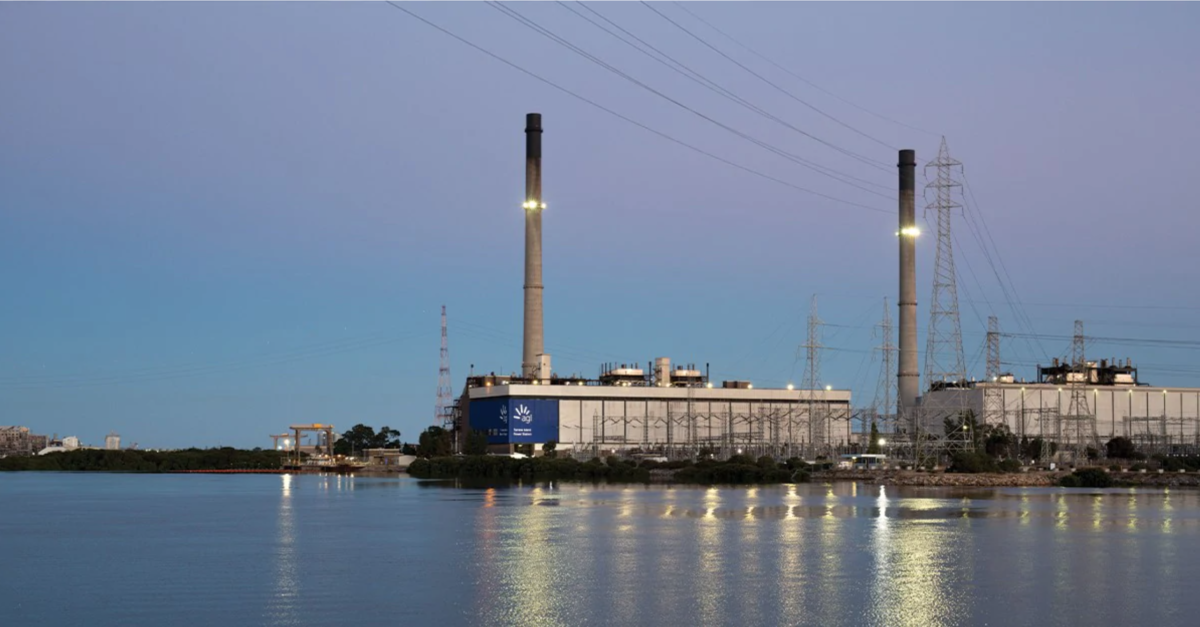In the same way former U.S. President Obama analogised big democratic societies working like ocean liners, so too for big energy companies such as AGL. One moment AGL is Australia’s biggest emitter, and then the wheel is slowly turned and the big ship pivots. Sometimes the shifts are incremental, steering adjustments of what seems mere degrees, and yet the ship will end up in a vastly different place than it would have without the adjustments.
Earlier this week, AGL announced that it is forging ahead with plans to establish a 200 MW grid-scale battery at its Loy Yang power station in Victoria’s Latrobe Valley, having lodged a planning with the state government. That’s a few degrees in the transition to clean energy right there.
Today, AGL has announced that construction on a 250 MW one-hour duration grid-scale battery at the site of its Torrens Island power station in South Australia had been given the green light. The battery had originally been slated as a four-hour-duration system but that is now being kept as an expansion plan. The most important thing though, as Jay Gatsby would tell you, is the green light.
Getting construction underway on one of the grid-scale batteries that will eventually make up 850 MW of battery-based assets AGL has committed to build by 2024 is another significant shift in steering that will turn the big ship of AGL toward a new destination in the clean energy transition.
AGL chief operating officer Markus Brokhof said battery technology is key to enhancing the energy system’s flexibility while leading Australia’s energy transition and ongoing integration of renewables.
AGL has also signed non-exclusive framework agreements with energy storage technology companies Fluence and Wärtsilä to supply up to 1 GW of large-scale battery storage.
Earlier this year, AGL was branded the nation’s biggest polluter, emitting more than 42 million tonnes of carbon emissions in 2020, but has promised to transition to “full decarbonisation” by 2050 and said batteries would be crucial in that process.
“It is through low emission firming technology, like batteries, that we are continuing to drive AGL’s energy transition and respond to the accelerating market forces of customer demand, community expectation and the development of technology,” said Brokhof.
The company has plans to build utility-scale batteries at its Liddell power station (150MW) and at Broken Hill (50MW) in New South Wales and has announced support for battery projects at Wandoan (100 MW) in Queensland and Maoneng (4 x 50 MW) in NSW. It is already operating the 30 MW/ 8 MWh BESS at Dalrymple in South Australia.
“We’re excited to be giving the green light to the Torrens grid-scale battery,” said AGL managing director and CEO Brett Redman, “the first one in the AGL network that is under development, and I’d like to thank Minister van Holst Pellekaan for his support and commitment to this project.”
“We put forward our vision for this project less than six months ago and with the hard work of our team and support from the South Australian government we are now ready to make this a reality,” continued Redman, “…we know this battery will be instrumental in maintaining reliable and affordable supply for households and businesses in South Australia in the years ahead.”
South Australian Energy Minister, Dan van Holst Pellekaan said South Australia will soon have a new ‘biggest battery’, funded by the private sector, which is a strong vote of confidence in our government’s energy policies.
“This will be the fifth grid-scale battery in our state, and the fourth one built since the last state election,” Minister van Holst Pellekaan said. “This investment shows the confidence the private sector has in South Australia’s energy sector, as a result of the world-leading well managed renewables focus of the Marshall Government.”
AGL is one of a number of gen-tailers, developers, network owners and service providers to announce new battery projects in recent months as the search for essential stabilising services to the grid ramps up as coal-fired generators are retired.
EnergyAustralia earlier this month announced it would replace its Yallourn coal-fired power station in the Latrobe Valley with a four-hour 350 MW capacity big battery. Neoen announced plans in January for a 500 MW / 1000 MWh big battery to be built west of Sydney, while later that month Origin Energy announced it would build a 700 MW mega-battery with a dispatch duration of four hours at the site of its ageing Eraring Power Station in the NSW Hunter region.
With construction now underway AGL believes the Torrens Island battery will be fully operational by early 2023.
This content is protected by copyright and may not be reused. If you want to cooperate with us and would like to reuse some of our content, please contact: editors@pv-magazine.com.









By submitting this form you agree to pv magazine using your data for the purposes of publishing your comment.
Your personal data will only be disclosed or otherwise transmitted to third parties for the purposes of spam filtering or if this is necessary for technical maintenance of the website. Any other transfer to third parties will not take place unless this is justified on the basis of applicable data protection regulations or if pv magazine is legally obliged to do so.
You may revoke this consent at any time with effect for the future, in which case your personal data will be deleted immediately. Otherwise, your data will be deleted if pv magazine has processed your request or the purpose of data storage is fulfilled.
Further information on data privacy can be found in our Data Protection Policy.